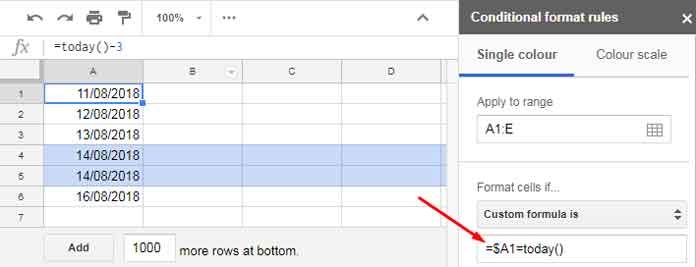

- #Strings in conditional formatting excel 2011 mac code#
- #Strings in conditional formatting excel 2011 mac series#
- #Strings in conditional formatting excel 2011 mac windows#
#Strings in conditional formatting excel 2011 mac code#
Following is the code and the output associated with the code.

The object supplied to the format item is the number 100. The C format string is a Standard Numeric Format String, and it is the Currency Format Specifier.

The command shown here uses a format item that that specifies the index of 0 for the first item, and a format string of C. This behavior is the same as using the Write-Host cmdlet. It does not send objects down the pipeline.
#Strings in conditional formatting excel 2011 mac windows#
NET Framework class writes directly to the Windows PowerShell console. The WriteLine static method from the System.Console. Example 1: Use format string with the WriteLine static method The Windows PowerShell format operator and the Format static method were illustrated in yesterday’s Hey, Scripting Guy! Blog, Understanding PowerShell and Basic String Formatting. The second method illustrates performing the same task by using the format operator from Windows PowerShell, and the last example illustrates using the Format static method from the System.String. The first example illustrates using the WriteLine static method from the System.Console. The following examples illustrate using this technique. Many of the format specifiers are usable directly within the format item. Using format strings with composite formatting Note For reference information about this technique, see Composite Formatting on MSDN. The format item syntax of this technique is shown here: The first thing I want to talk about today is using format specifiers to control the way that certain objects display. The first blog, Understanding PowerShell and Basic String Formatting, provided a great overview to the basics of using the Format method from the String class and the Format operator from Windows PowerShell for composite formatting.
#Strings in conditional formatting excel 2011 mac series#
Note This is the second blog post in a series of five that talk about using format methods and operators in Windows PowerShell. To me the milk and honey mix well with the smoky flavor of the tea. I generally add milk to the tea and use a bit of honey with it. I am sipping a cup of Lapsang Sochong tea. Microsoft Scripting Guy, Ed Wilson, is here. In the past, I have used multiple lines to create this sort of outputs, but now I would like to simplify the process. Hey, Scripting Guy! Often I need to create an output string that is the result of multiple computations. Summary: Microsoft Scripting Guy, Ed Wilson, talks about using Windows PowerShell to specify composite formatting to format strings.


 0 kommentar(er)
0 kommentar(er)
